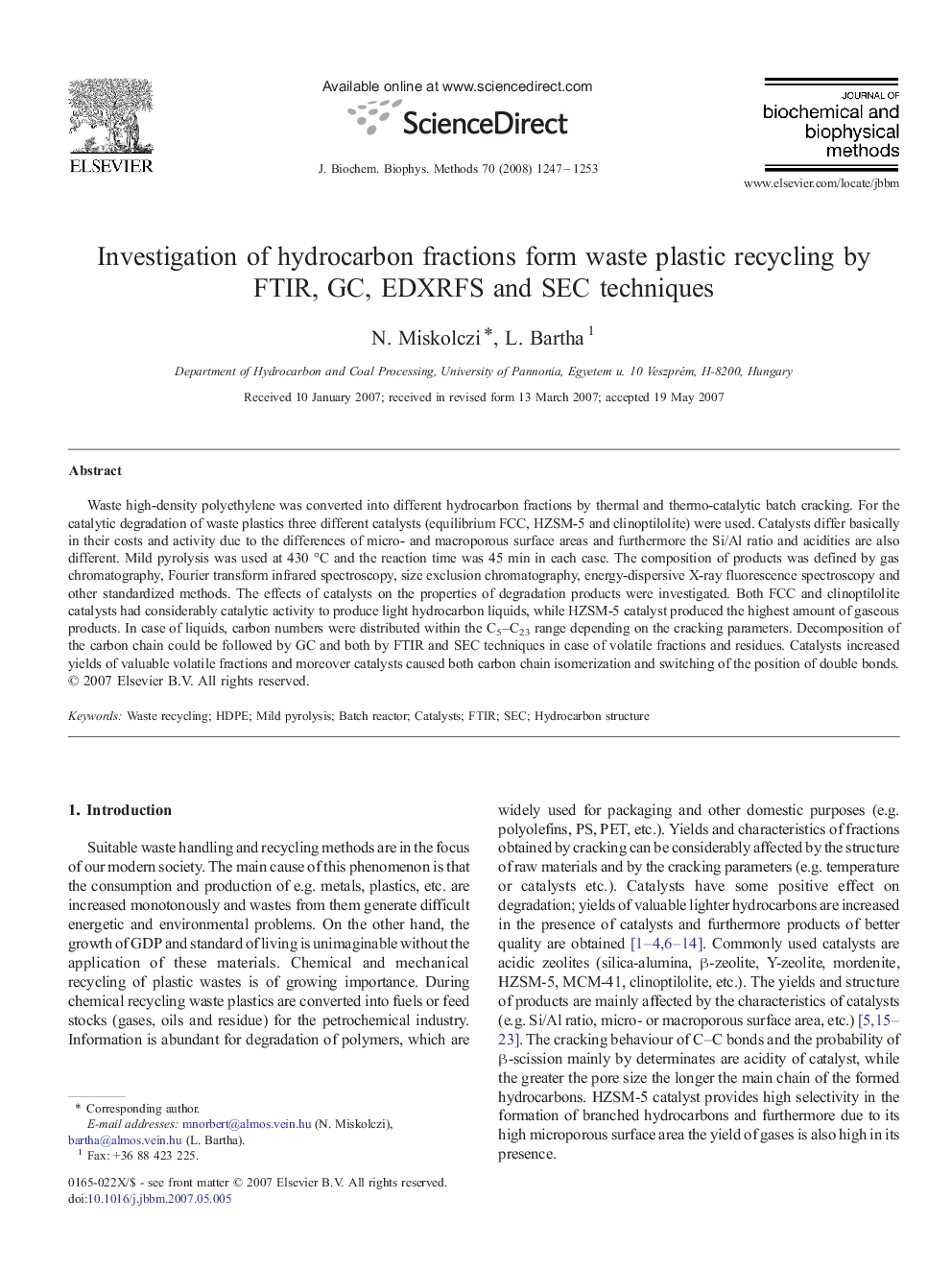| Article ID | Journal | Published Year | Pages | File Type |
|---|---|---|---|---|
| 1988419 | Journal of Biochemical and Biophysical Methods | 2008 | 7 Pages |
Waste high-density polyethylene was converted into different hydrocarbon fractions by thermal and thermo-catalytic batch cracking. For the catalytic degradation of waste plastics three different catalysts (equilibrium FCC, HZSM-5 and clinoptilolite) were used. Catalysts differ basically in their costs and activity due to the differences of micro- and macroporous surface areas and furthermore the Si/Al ratio and acidities are also different. Mild pyrolysis was used at 430 °C and the reaction time was 45 min in each case. The composition of products was defined by gas chromatography, Fourier transform infrared spectroscopy, size exclusion chromatography, energy-dispersive X-ray fluorescence spectroscopy and other standardized methods. The effects of catalysts on the properties of degradation products were investigated. Both FCC and clinoptilolite catalysts had considerably catalytic activity to produce light hydrocarbon liquids, while HZSM-5 catalyst produced the highest amount of gaseous products. In case of liquids, carbon numbers were distributed within the C5–C23 range depending on the cracking parameters. Decomposition of the carbon chain could be followed by GC and both by FTIR and SEC techniques in case of volatile fractions and residues. Catalysts increased yields of valuable volatile fractions and moreover catalysts caused both carbon chain isomerization and switching of the position of double bonds.
